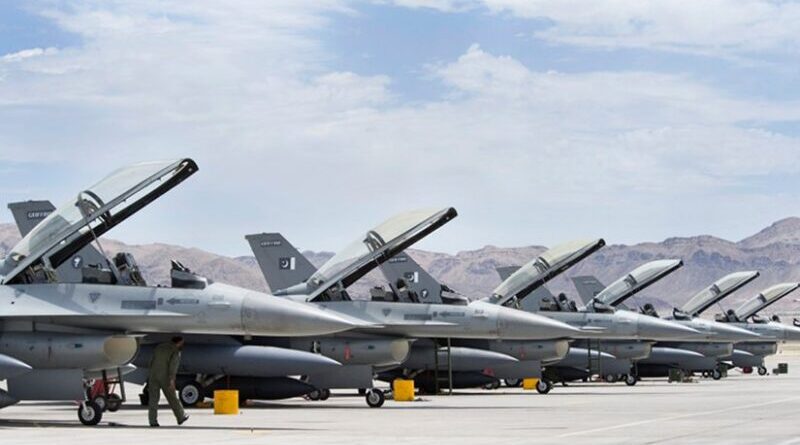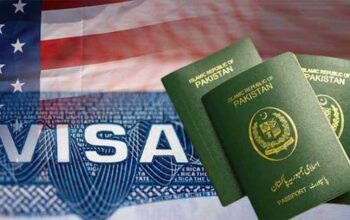By Monitoring Desk
A US-brokered ceasefire has paused the latest clash between India and Pakistan, nuclear-armed rivals whose rivalry nearly spiraled into disaster. Yet this tenuous truce reveals a seismic shift: Pakistan, long outmatched by India’s military might, not only stood firm but gained a strategic edge, upending South Asia’s power dynamics.
The flare-up began on April 22 with an attack in Pahalgam, in occupied Kashmir. India pointed fingers at Pakistan-based militants, offering no evidence, and ignored Islamabad’s call for a neutral probe. Instead, New Delhi escalated, launching missile and drone strikes into Pakistan starting May 7. The conflict peaked May 9-10, when Indian forces hit Pakistani military sites, only to face a stunning counterattack.
Pakistan’s response was a masterclass in precision and restraint. On May 7, its Chinese-supplied J-10C fighters, armed with PL-15E missiles, downed five Indian jets, including advanced Rafales, denting India’s air superiority. On May 10, hypersonic missiles from JF-17 aircraft crippled India’s S-400 defense system, shattering the myth of New Delhi’s billions of dollars military modernisation.
“This week’s India-Pakistan conflict has marked a turning point, with modern conventional weaponry reshaping the battlefield and expanding the scope for the conventional use of force,” Dawn newspaper quoted Muhammad Faisal, a South Asia research analyst at the University of Technology Sydney, as saying.
The downing of the Rafales and the S-400—cornerstones of India’s military modernisation—sent shockwaves beyond the subcontinent, challenging New Delhi’s long-held strategy of controlling the escalation ladder.
Pakistan’s victories stunned observers. Former Pakistani national security adviser Gen. Nasser Janjua put it bluntly: “Pakistan has successfully re-established the deterrence, stability and balance in the region. Pakistan has also successfully buried the concept of limited war under a nuclear environment.”
For a nation often cast as the underdog, these victories underscored a newfound credibility in its deterrence posture.
As the crisis threatened to escalate, the U.S. stepped in—not as a neutral player, but as a power rattled by the prospect of unchecked escalation. With India’s air force battered and its military options narrowed, Secretary of State Mark Rubio brokered talks, engaging Pakistan’s Army Chief Gen. Asim Munir directly. The ceasefire, sealed Saturday at 16:30, included Pakistan’s push for neutral-site negotiations—a diplomatic coup signaling Islamabad’s newfound leverage.
The G7’s May 10 statement underscored this shift, urging dialogue without censuring Pakistan—a subtle rebuff to India’s victimhood narrative. New Delhi’s refusal to allow an independent investigation into Pahalgam, paired with its aggressive strikes, left it diplomatically isolated.
“India over assessed and miscalculated its newfound relevance while eyeing to become a counterweight to China and being part of the Indo-Pacific strategy,” Gen. Janjua observed. “The whole conflict till May 10 exposed India’s exaggerated and inflamed strategic relevance.” Pakistan, by contrast, framed its actions as legitimate self-defence under Article 51 of the UN Charter, a stance that found quiet resonance internationally.
Yet the truce remains fragile. Reports of breaches emerged hours after the ceasefire, a grim reminder of the mistrust that defines this rivalry. India’s post-ceasefire spin—that the deal is a loose “understanding” with no binding terms or international oversight—has fueled unease. Its refusal to lift the April 23 suspension of the Indus Waters Treaty, a move Pakistan calls provocative, only heightens tensions.
“India must cease its threats, stop externalising its internal security issues, and engage in meaningful dialogue with Pakistan,” said former Pakistani Foreign Minister Jalil Abbas Jilani. “A backchannel between the two NSAs should be established to lay the groundwork for talks. As a first step, India must reverse its suspension of the Indus Waters Treaty to address a key Pakistani concern.” Without such steps, the ceasefire risks becoming a temporary lull rather than a pathway to peace.
Kashmir remains the core issue. India’s blanket labelling of unrest as terrorism dodges the need for political solutions, perpetuating instability. “Pakistan hopes that India will stop its march to the follies and learn from the outcome of conflict and will come to terms for a peaceful coexistence by resolving all its disputes with Pakistan, including Kashmir and Indus Waters Treaty, which was unilaterally and illegally suspended despite the World Bank being a guarantor,” Gen. Janjua said. “India must stop assuming it’s above international law.”
Analyst Faisal said, “despite ceasefire and commitment to talks, Pakistan needs to remain ready for another round of military confrontation”. The stakes, as ever, are sky-high in a region where missteps could ignite a broader conflagration.
Pakistan’s military precision and diplomatic savvy have rewritten its regional role. It didn’t just weather India’s assault—it forced a rethink of the balance of power. But lasting peace requires more, and the burden of peace cannot rest on Islamabad alone. The US and its allies, having secured this truce, must now push India to address the root causes, not just the symptoms. Ceasefires buy time; they don’t resolve conflicts.
India faces a choice: learn from its overreach or risk further isolation. Pakistan, having proven its strength, has opened the door to dialogue. Whether New Delhi walks through remains unclear. (Content courtesy Dawn newspaper)
Copyright © 2021 Independent Pakistan | All rights reserved




